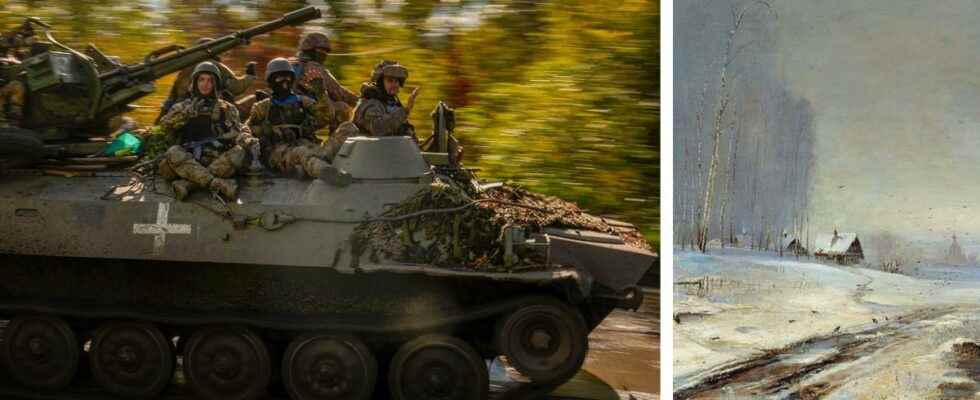Published: Less than 50 min ago
Updated: Just now
Ukraine has about six weeks to create new problems for Russia on the battlefield.
From the American side, one sees double possibilities, writes The New York Times.
Then the dreaded “rasputitsa” strikes and stops the offensive considerably.
Since the start of the counter-offensive, Ukraine has advanced on two fronts.
The focus of the war is currently on the Ukrainian advance along the Dnieper River south towards the city of Kherson near the Black Sea.
But they are also trying to gain a foothold in the Russian-occupied region of Luhansk in the north-eastern part of the country.
According to American intelligence sources, the window to advance on both fronts and cause Russia new setbacks is estimated to be about six weeks, writes The New York Times.
Dreaded obstacle
Then the dreaded transport obstacle “rasputitsa” (roughly menføre) is expected to strike. It is the autumn phenomenon before the snow and cold harden the ground as the roads become a slush of mud.
The American intelligence sources do not believe that before then Ukraine will have time to advance at the same speed as during the beginning of the counter-offensive earlier in the autumn, writes The New York Times.
But there is a hope that individual Russian units will be knocked out under heavy Ukrainian pressure and that in this way they will be able to achieve success on both fronts.
The “highest profit” that is within reach before the mud chaos is said to be Kherson.
But it is also believed that Russia can be dealt a stinging blow in Luhansk by cutting off important supply routes in the region.
The American sources believe that it is difficult to give any reliable estimates about the future development of the war.
The advance slowed
This for several reasons:
Ukraine and Russia have taken turns to be in the driver’s seat since the war began, making it difficult to make any major short-term gains.
In addition, it is not known how resilient the Western countries will be when electricity prices skyrocket and winter is at the door – and whether a Republican victory in the mid-term elections will mean reduced funding for Ukraine.
According to military analysts, however, it is Ukraine that has the momentum.
– Ukraine has a window to act right now. They have the freedom to decide where to attack, says analyst Mason Clark, an expert on the Russian military, to The New York Times.
The newspaper’s sources within the Pentagon believe that Ukraine should continue the advance until the fall weather means a natural stop. But at the same time, one must show caution and not give Russia the chance to exploit weaknesses in the Ukrainian defense lines.
Ukrainian commanders in the field state that the advance has slowed down after the successes in September.
– We are moving forward, but not as fast as in Kharkiv, says Major Yaroslav Galas, who is participating in the advance towards Kherson, to The New York Times.
– And we have suffered great losses.
Alarms about “terror” against dust
In recent days, Russia has begun an evacuation of the population in the occupied city of Kherson ahead of the expected onslaught.
At the same time, Ukraine has been unusually quiet about successes in the offensive – leading experts to believe that something is coming soon.
Ukrainian President Volodymyr Zelenskyi has accused Russia of planning “an act of terror” that could be carried out when the evacuation of its own citizens is completed.
He states that Russia may blow up a hydroelectric dam – thereby flooding 80 cities and communities in southern Ukraine, including Kherson.
At the same time, Russia accuses Ukraine of constant shelling and of almost terrorizing the pro-Russian population of Kherson, which remained after the occupation.
Regardless of whether Kherson falls into Ukrainian hands before the “rasputitisa”, a calmer period likely awaits when Russia can regroup and possibly better train the new soldiers added during Putin’s partial mobilization, writes The New York Times.
New thrust in February
It is believed that the frost will make the ground hard enough by February for the troops to be able to move at the same speed as now.
At the same time, one does not dare to speculate on how Putin intends to use the time until then. In a worst-case scenario, he orders an escalation so extreme that tactical nuclear weapons are used in the war.
But he can also decide to try to keep the territories he already occupies by starting negotiations with Ukraine, writes The New York Times.
– I do not think that the Ukrainians will be able to cause the Russian military to completely collapse in the near future. In this way, the Russians have managed to cope with their losses. But I think that major Russian offensive operations are hardly relevant where things are now, says Mason Clark to the newspaper.
